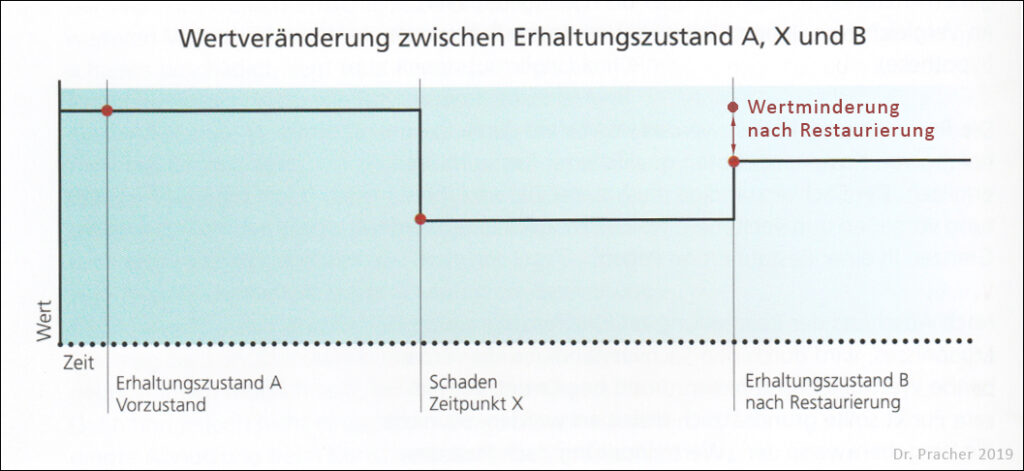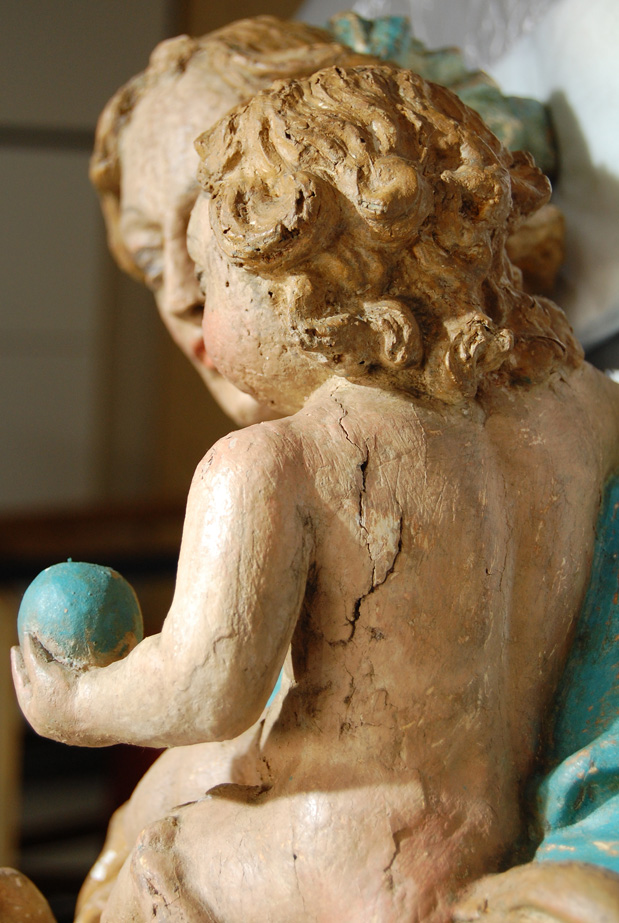DAMAGE AND DIMINUTION OF VALUE
The damage of an artworks requires in court or insurance cases the determination of the damage scope, the restoration possibilities and costs and the value diminution after restoration.
The sole description of the material damage, however, gives little information on the extent to which the damage impacts and effects a work of art.
Art is defined by the duality of material (and material use) and appreciation of an object as a work of art. A damage can affect and change both aspects sustainably. This change in material and appreciation, if known, has a direct influence on pricing and the market chances of selling.
Therefore, a work of art is less valuable after a damage and restoration. The monetary compensation, that the owner can expect after restoration, can be defined and explained in a comprehensible and transparent manner.
MATERIAL AND IMMATERIAL ASPECTS OF A DAMAGE
Before identifying the value diminution after restoration, the individual significance of the damage to the artwork is to be determined by examining and evaluating the various material and immaterial aspects of the damage.
The damage aspects include e.g. the “position of damage in the composition”, the “impairment of the technical and assigned function”, the “restorability” and the “impairment of artistic performance” to name a few.
This definable individual meaning of the damage in percent forms the basis for the argumentation of the diminution of the value in percent of the artwork after restoration.
+++++++++++++++++++++++++++++++++++++++
Axioms on value and state of preservation after conservation/restoration
Axiom 1
From the point of view of the conservator-restorer:
The starting point of the restoration consideration is the value and the state of preservation of the work of art after the damage event (Fig. point X). Accordingly, a conservation/restoration can improve the value and state of preservation of the work of art beyond the starting point.
Axiom 2
From the point of view of the damage assessor:
The starting point of the damage expert assessment is the value and the state of preservation of the work of art before the damage event (Fig. point A). Accordingly, a conservation/restoration cannot improve the value and the state of preservation of the work of art beyond the starting point.

Publications of Dr. Pracher on value diminution of artworks
Pracher, Martin: „Erhaltungszustand und Wertverlust – Versicherung und Schaden“, in: Der Kunst einen Wert zuweisen, Dokumentation zum Symposium 2017, Hrsg.: Sasa Hanten-Schmidt, Van Ham Art Publications, Köln, 2017, ISBN: 978-3-00-057715-4
Pracher, Martin: „Der Q-WERT als Voraussetzung zur Wertminderung bei Kunstwerken“ in: Wertminderungen im Sachverständigenwesen, Theorien zur Beurteilung und Berechnung, Hrsg. Willi Schmidbauer, München, 2016, ISBN: 978-3-7892-1833-0.
Pracher, Martin: „Die Lage des Flecks“ (Möglichkeiten zur Qualifizierung von Schäden, materielle und ideelle Aspekte eines Schadens), Antiquitätenzeitung (Weltkunstverlag/Zeitverlag), München, Okt. 2006.
sowie zahlreiche Vorträge zu Wert und Wertminderung von Kunstwerken.

